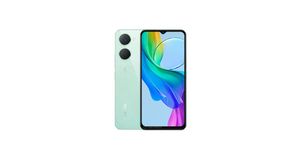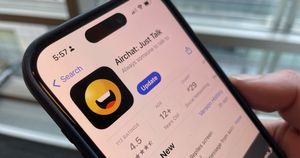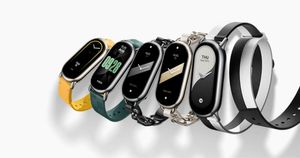It’s been three years since we last saw a Pixel flagship phone being officially launched and sold in India. The Pixel 7 series made its India debut in October 2022, making this feeling even more special because a Pixel flagship was priced under Rs 60K for the first time. With a starting price of Rs 59,999 (and additional offers up to 10K), the Pixel 7 goes head-to-head against some of the mightiest competitors in the Android space, namely the OnePlus 10 Pro, Xiaomi 12 Pro and Vivo X80.
While Pixel’s traditional strengths have been its camera and software magic, one new variable in this equation is its custom Tensor chips. The Pixel 7 comes with Google’s brand-new Tensor G2 chipset, which promises to improve on some of the shortcomings that plagued the first-gen Tensor. The Tensor chip in the Pixel 6 series struggled with heating issues and inconsistent battery drain. We put the Pixel 7 to the test to see if the Tensor G2 fares any better and how it compares to the Snapdragon and MediaTek chipsets of 2022.
Pixel 7 Battery Test: Test Conditions
If you’re unfamiliar with MSP Battery tests, here’s how it goes. All of the phones used in the test are charged to 100%. They are connected to the same Wi-Fi network, with flight mode on and no SIM card installed. All of them have the screen brightness dialled up to the maximum with auto brightness turned off, and their speaker volumes remain at 100% for the rounds that involve sound output. All the phones that we used were running on the latest version of stable software available for them. We used the OnePlus 10 Pro, Xiaomi 12 Pro, Vivo X80, and Pixel 7 for this test. Here’s a handy refresher of their specs before we dive into the results:
| Pixel 7 | OnePlus 10 Pro | Xiaomi 12 Pro | Vivo X80 | |
| Display | 6.3-inch FHD AMOLED
90Hz Refresh 8-bit colour |
6.7-inch QHD AMOLED
120Hz LTPO2 10-bit colour |
6.73-inch QHD AMOLED
120Hz LTPO 10-bit colour |
6.78-inch FHD AMOLED
120Hz Refresh 8-bit colour |
| Processor | Tensor G2
(5nm) |
Snapdragon 8Gen1(4nm) | Snapdragon 8Gen1(4nm) | Dimensity
9000 (5nm) |
| Battery | 4355mAh | 5000mAh | 4600mAh | 4500mAh |
| Charging | 30W | 80W | 120W | 80W |
Note that the OnePlus 10 Pro and Xiaomi 12 Pro come with QHD (1440p) screens, but for this test, we set their screen resolutions to FHD (1080p). Our test comprises 5 different rounds, namely:
- Two hours of 1080 video playback on YouTube with speakers at full volume.
- An hour of benchmarks, including up to 2 Geekbench runs, 2 AnTuTu v9 runs, a storage speed test and a CPU throttling test of 15-20 minutes.
- An hour of gaming playing Asphalt 9 or COD Mobile at the highest possible graphics setting available on all phones.
- 30 minutes of video recording at the highest possible video resolution available on all phones, in this case, 4K 60fps.
- Two hours of social media use, mostly scrolling through Instagram reels.
Now that you have a fair idea of the test methodology, here are some of the key results from our testing:
Pixel 7 Display & Multimedia
While not packing in a fancy 10-bit display or superior LTPO tech, the Pixel 7 display still manages to hold its own in the face of tough competition. It is a vibrant, punchy panel with near-accurate colour reproduction, something the Vivo X80 and other phones under 50K lack. The Pixel 7’s display is also smaller than most modern flagships, which can be good or bad depending on how you view it. I love the smaller form factor of the phone, and the 6.3-inch size is still big enough not to make video or text content feel cramped. Although, Google could have done a better job at shrinking the bezels.
Also Read: Google Pixel 7 Pro Review: The Smoothest Android Smartphone of 2022, Period
The Xiaomi 12 Pro still takes the cake in terms of display, thanks to its 10-bit panel with Dolby Vision support for apps like Netflix. The OnePlus 10 Pro comes in a close second. Both these phones also feature curved displays making the front of these devices look almost bezel-less.
Like most modern flagships, the Pixel 7 has a stereo speaker setup, which also does surprisingly well. Even without having a dedicated secondary speaker like on the Xiaomi 12 Pro, the Pixel 7’s earpiece combines with the bottom-firing speaker to deliver well-tuned sound with just enough low-end. In comparison, the Vivo X80 and some other iQOO phones still sound too tiny despite having stereo setups. Overall, the multimedia-watching experience on the Pixel 7 is sufficiently good, but for the best experience, the Xiaomi 12 Pro will be my pick.
Pixel 7 Benchmarks & Performance
Here’s a breakdown of the three flagship chipsets in these phones that we put to the test:
| Tensor G2 | Snapdragon 8 Gen1 | Dimensity 9000 | |
| Fabrication | 5nm | 4nm | 4nm |
| CPU
Configuration |
2×2.85GHz Cortex-X1 2×2.35GHz Cortex-A78
4×1.80GHz Cortex-A55 |
1×3.00GHz Cortex-X2 3×2.50GHz Cortex-A710
4×1.80 GHz Cortex-A510 |
1×3.05GHz Cortex-X2 3×2.85GHz Cortex-A710
4×1.80 GHz Cortex-A510 |
| GPU | Mali-G710 MC10 | Adreno 730 | Mali-G710 MC10 |
As you can see from the on-paper specs, the Tensor G2 lags behind the 2022 SoCs from Qualcomm and MediaTek as it:
- a) comes with last year’s 5nm fabrication process and,
- b) uses last year’s CPU cores.
This is also reflected in the benchmark scores, as the Tensor G2 scores are closer to last year’s Snapdragon 888 than the current-gen chips. Take a look:
| Tensor G2 | Snapdragon 8 Gen1 | Dimensity 9000 | |
| AnTuTu v9 | 726295 | 975914 | 980182 |
However, it was heartening to see that the Pixel 7 managed to control performance throttling and overheating to quite some extent. It’s still powerful enough to make the phones run smoothly, thanks largely to Google’s software optimisations. The Pixel 7 isn’t meant to be a gaming device, but it can still run all the top mobile games at the highest graphics settings. Although, don’t expect endless hours of sustained high performance from it. Casual gaming sessions shouldn’t be a problem, though.
That doesn’t mean all is well for the Pixel, as the Tensor G2 still showed some troubling signs in our testing. Firstly, during our 30-minute video recording test, it could record only about 15 minutes of video before giving an overheating warning. The OnePlus 10 Pro gave a similar warning but continued shooting the video with the screen preview turned off. The Pixel, on the other hand, just completely refused to record at all, and it didn’t let us restart recording in the remaining 15 minutes of the test. Moreover, just like last year’s Tensor, the G2 also seems to be draining battery really fast while the phone is being used outdoors in bright sunlight, mostly due to the screen consuming a lot of power. High brightness mode generally makes the battery drain faster on most phones, but the Pixels seemingly have it even worse, as uncovered by the folks over at XDA.
Pixel 7 Battery & Charging
One good thing about our battery test format is that the screen-on times you get here very much mimic the SoTs you can expect from these phones based on an average use case. If you’re a light user or a heavy gamer, your mileage will of course vary. So, I wasn’t really surprised to see that all four phones here couldn’t reach the 6.5-hour mark in this test. For the uninitiated, a 6-6.5-hour SoT is what you generally call a ‘full-day’ battery life in a smartphone. All four of them were close though, so they offer just about the battery life that you can expect from a 2022 Android flagship.
| Pixel 7 | OnePlus 10 Pro | Xiaomi 12 Pro | Vivo X80 | |
| Battery Size | 4355mAh | 5000mAh | 4600mAh | 4500mAh |
| Screen-On Time | 6Hr 17Mins | 5Hr 58Mins | 6Hr 09Mins | 6Hr 05Mins |
| Average Drain | -11.6mAh/min | -14mAh/min | -12.5mAh/min | -12.3mAh/min |
Here you can see the final screen-on times these phones reached before switching off and also the average battery mAh that they were draining every minute based on their battery capacities. The OnePlus 10 Pro does the worst, dying first despite having the largest battery of the lot. Xiaomi 12 Pro manages to last about 10 minutes extra but also with a much smaller cell. Both phones suffer from Snapdragon 8 Gen1’s thermal issues and don’t offer much peace of mind regarding battery longevity. Thankfully, both of them come with superfast chargers and take only about 30 minutes to recharge fully. The Vivo X80 manages to give about the exact same runtime but with an even smaller battery. The Dimensity 9000 onboard is truly the sleeper hit of 2022 flagship chipsets.
Coming back to the star of the show, the Pixel 7; it manages to last the longest despite having the smallest battery capacity. To be fair, it did just sit there for 15 minutes in the video recording round when every other phone was recording excruciating 4K60fps videos. But it also has to do with the fact that the Pixel 7 had a 90Hz refresh rate display compared to 120Hz on all other phones. Plus, the phone doesn’t really push itself to the limits when it comes to heavier tasks like gaming and benchmarks, so it saved some battery there. For what it’s worth, the Pixel 7 lost the most battery in the Video playback round and that’s a bit concerning. OnePlus and Xiaomi come with LTPO displays that can adjust its refresh rate according to the content being viewed means they most likely switched to a 30Hz or 60Hz refresh rate while the video was being played. The Pixel lacks that ability and maybe that’s why it loses battery faster.
But one thing that lets the Pixel 7 down is its charging speed. The Pixel 7 series supports only 30W USB PD charging and they don’t even come with a charger in the box. Our Pixel 7 took about 1 hour and 50 minutes to charge from 0-100% while all other phones here take less than half of that time. This becomes a crucial factor when you are travelling or in case of emergencies where you just can’t rely on the Pixel to recharge quickly enough if and when needed. Being a Samsung flagship user myself, I know what this feels like and how much it adds to my battery anxiety.
Pixel 7 Verdict
So that was our first in-depth test of the Pixel 7. For now, it seems like a solid all-around option for its price. It’s not meant for heavy gamers but will more than satisfy your daily performance needs. It can last just about an entire day although the charging speeds might disappoint those who are switching over from a Xiaomi/BBK phone. For more in-depth content on Pixel 7, don’t forget to check out our YouTube channel.













